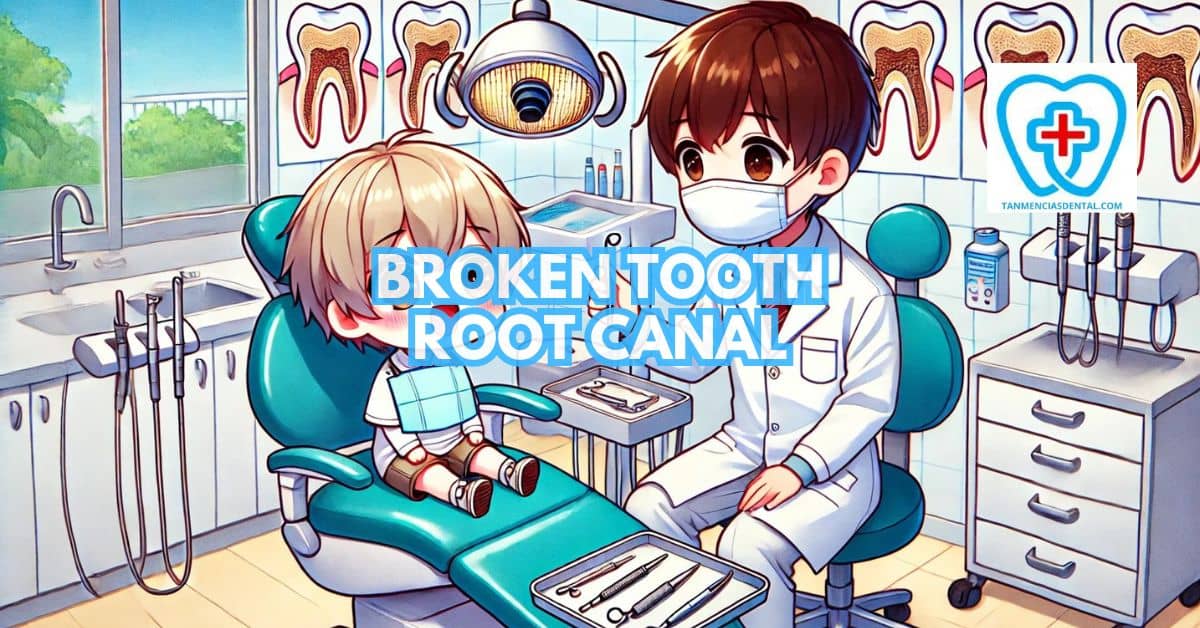A broken tooth root canal is a dental treatment aimed at saving a tooth with significant damage that extends into the root.
When the tooth’s pulp, the soft tissue inside, becomes infected due to a break or fracture, the root canal procedure is often required.
The treatment involves removing the damaged pulp, cleaning the root canals, and sealing them to prevent future infection.
This procedure helps avoid the need for tooth extraction while preserving its function.
Knowing what to expect during a root canal can reduce concerns and ensure a smoother experience.
1. Initial Consultation: Your First Step to Recovery
Your initial consultation is a key step where the dentist evaluates the broken tooth and its surrounding tissues.
X-rays are usually taken to assess the extent of the damage, allowing the dentist to see how deep the fracture reaches and if there is an infection.
During this appointment, you will also discuss your symptoms, medical history, and any concerns about the procedure.
The dentist will then determine if a root canal is necessary or if other treatments would be more appropriate.
This visit sets the foundation for a customized treatment plan and ensures you understand the steps involved.
🦷 What You Need to Know About Drinking Orange Juice After Brushing Teeth
2. Recognizing the Symptoms That May Require a Root Canal
When a broken tooth leads to an infected pulp, there are several symptoms to watch for that may indicate a need for a root canal.
Persistent or sharp tooth pain is a major symptom that often worsens when chewing or applying pressure.
You might also experience sensitivity to temperature, such as pain when consuming hot or cold foods.
Swelling or tenderness in the gums near the broken tooth, as well as discoloration of the tooth itself, are other common indicators.
Recognizing these signs early helps prevent complications, such as the spread of infection to other areas.
🦷 What to Do About a Broken Tooth Molar: Understanding Your Pain
3. Preparing for Your Root Canal Appointment
Proper preparation for your root canal appointment can help make the procedure more comfortable and efficient.
Before the appointment, your dentist may prescribe antibiotics if there is a severe infection to reduce inflammation around the broken tooth.
It is also advised to have a light meal beforehand, as your mouth may be numb for several hours after the procedure.
Avoiding alcohol and smoking in the days leading up to the appointment can also aid in healing and minimize complications.
To make you feel more comfortable before the procedure, anesthesia, or aftercare, clarify any questions you have.
🦷 The Ultimate Guide to Dental Cleaning in Marikina: What to Expect and How to Prepare
4. Understanding Anesthesia: Staying Comfortable During the Procedure
Anesthesia plays a crucial role in ensuring your comfort throughout the root canal procedure.
A local anesthetic is applied to numb the area around the broken tooth, so you won’t feel pain during the treatment.
The dentist will usually test the numbness before starting to ensure you’re fully comfortable.
In certain cases, if you feel anxious or have trouble staying calm, sedation options may also be offered to help you relax.
The anesthesia typically wears off a few hours after the procedure, and any mild discomfort during this time can be managed with pain relief medication.
🦷 Understanding Preventive Dental Care Solutions for Families
5. Step-by-Step Breakdown of the Root Canal Procedure
The root canal process begins with the dentist numbing the affected area and isolating the tooth with a dental dam to keep it dry.
Next, a small hole is drilled into the tooth to access the pulp chamber, where the infected or damaged tissue is located.
Using specialized instruments, the dentist removes the pulp, cleans the root canals, and shapes them for filling.
The cleaned canals are then filled with a biocompatible material called gutta-percha to seal them.
Finally, the tooth is sealed with a temporary or permanent filling, and a crown may be recommended to provide additional strength.
🦷 Things to Consider Before Getting a Prosthodontic Procedure
6. How Long Will the Root Canal Take?
The duration of a root canal depends on factors such as the severity of the damage and the tooth’s location.
A typical root canal for a broken tooth usually takes between 60 and 90 minutes.
If the infection is extensive or if the tooth has multiple roots, the procedure may take longer or require a second visit.
After the initial root canal, a follow-up appointment may be necessary to place a permanent crown or finalize the restoration.
This timing allows the dentist to ensure the tooth has healed properly before completing the treatment.
🦷 Understanding Black Plaque On Teeth: Causes and Prevention Tips
7. What to Expect After Your Root Canal: Sensations and Discomfort
It’s normal to experience some discomfort after the root canal once the anesthesia wears off.
Common sensations include mild swelling, tenderness when chewing, and slight throbbing in the treated area.
Over-the-counter pain relief like ibuprofen or acetaminophen is often recommended to manage this discomfort.
Most patients find that these symptoms subside within a few days, but if pain persists or worsens, it’s important to contact your dentist.
In some cases, a bit of sensitivity may remain for a week or two, especially if the tooth was significantly infected before the procedure.
🦷 Why Dental Cleanings Are Important: Let’s Figure Out
8. The Importance of Follow-Up Care After a Root Canal
To ensure the success of your root canal and the long-term health of your tooth, follow-up care is essential.
During follow-up visits, your dentist will assess how the tooth is healing and may take additional X-rays to check for any lingering infection.
If a temporary filling was used, this appointment is when a permanent crown or filling is placed to fully protect the tooth.
After the procedure, regular dental checkups allow the dentist to monitor the tooth and ensure that the root canal remains effective.
Ignoring follow-up care could result in reinfection or damage to the tooth, making proper follow-up vital.
🦷 Understanding the Causes of a Broken Tooth Crown: What You Need to Know
9. Essential Aftercare Tips for a Smooth Recovery
After your root canal, proper aftercare will help speed up recovery and prevent complications.
Avoid chewing hard or crunchy foods on the treated side of your mouth until your dentist confirms the tooth is fully healed.
Practice good oral hygiene by gently brushing and flossing around the affected area to keep it clean.
Using ice packs and over-the-counter pain medication can help reduce swelling and discomfort in the first few days.
Additionally, it’s important to follow any specific instructions given by your dentist to ensure a smooth recovery process.
10. Long-Term Outcomes: The Future of Your Tooth After a Root Canal
With a successful root canal and proper care, your treated tooth can remain functional and healthy for many years.
A permanent crown is often placed over the tooth to restore its strength and prevent it from breaking in the future.
Regular dental visits, along with good oral hygiene, are key to maintaining the health of your restored tooth.
Over time, most patients report no issues with their treated tooth, and it can function just like a natural one.
In rare cases, if complications arise, retreatment may be needed, but this is generally uncommon with proper care.
🦷 Common Mistakes to Avoid When Brushing Toddler Teeth
👨⚕️ Conclusion
A broken tooth root canal offers a reliable solution for saving a damaged tooth and preventing the need for extraction.
Understanding the procedure, aftercare, and long-term expectations allows you to approach the treatment with confidence and clarity.
Root canal therapy not only relieves pain but also preserves your natural tooth, contributing to better oral health in the long run.
With proper treatment and diligent care, the tooth can be restored to full functionality, allowing you to maintain your smile.
Always remember that seeking timely treatment ensures the best possible outcome for your oral health.
😊 Self-Promotion
At Tan-Mencias Dental Clinic in Parang, Marikina City, we are dedicated to providing top-notch dental care in a warm and friendly environment.
Whether you need a routine checkup, treatment for a broken tooth, or any dental service, our experienced team is here to help you achieve a healthy, confident smile.
If you have any questions or concerns, feel free to reach out by calling us at 9171451074, sending a message through our Facebook page, or using the contact form on our website.
We are always pleased to assist you and ensure that your dental experience is smooth and comfortable.
Visit us today and let us take care of your smile!

